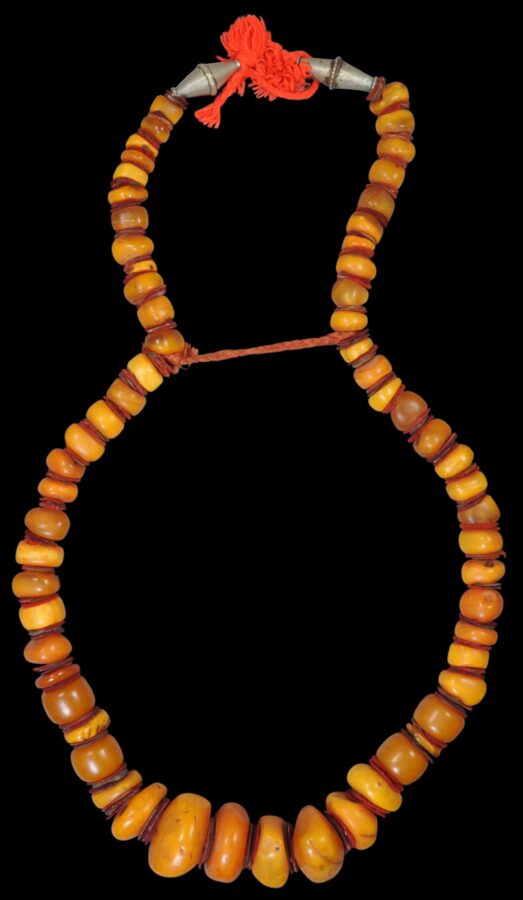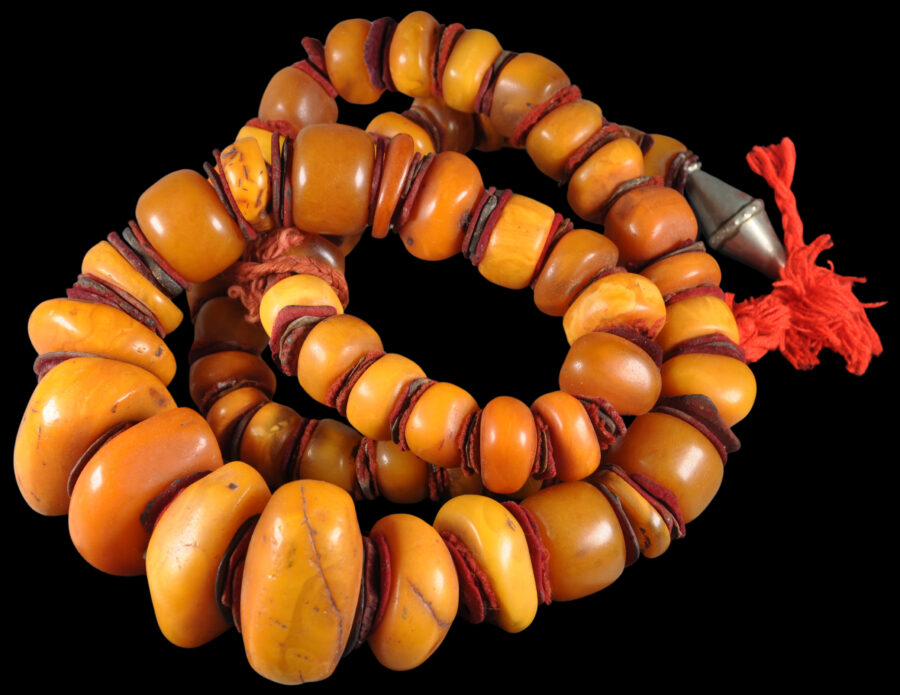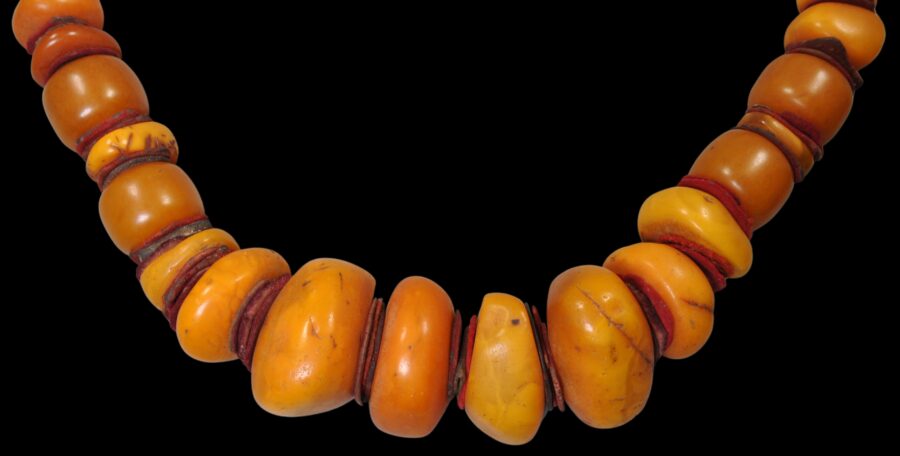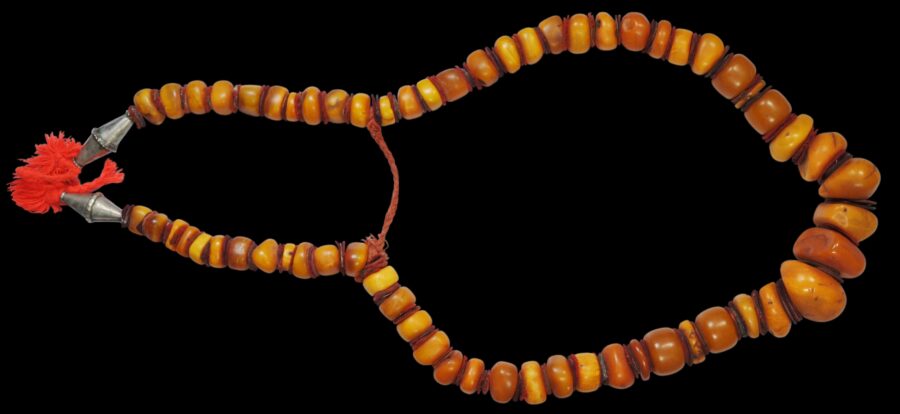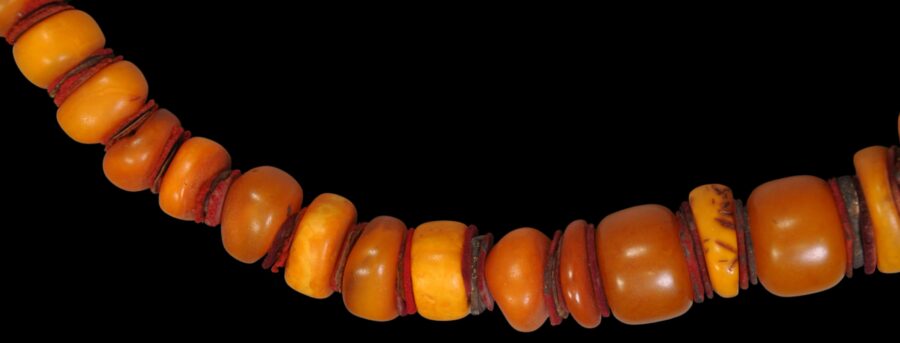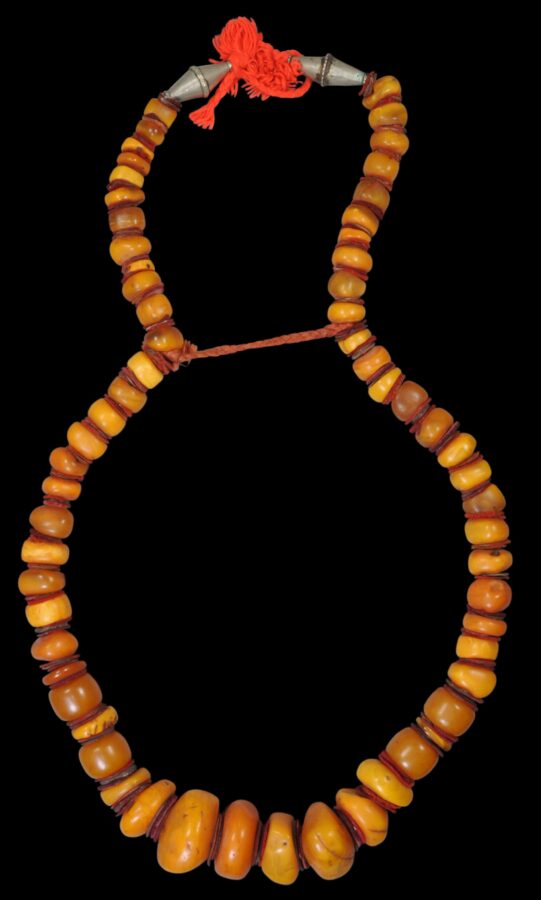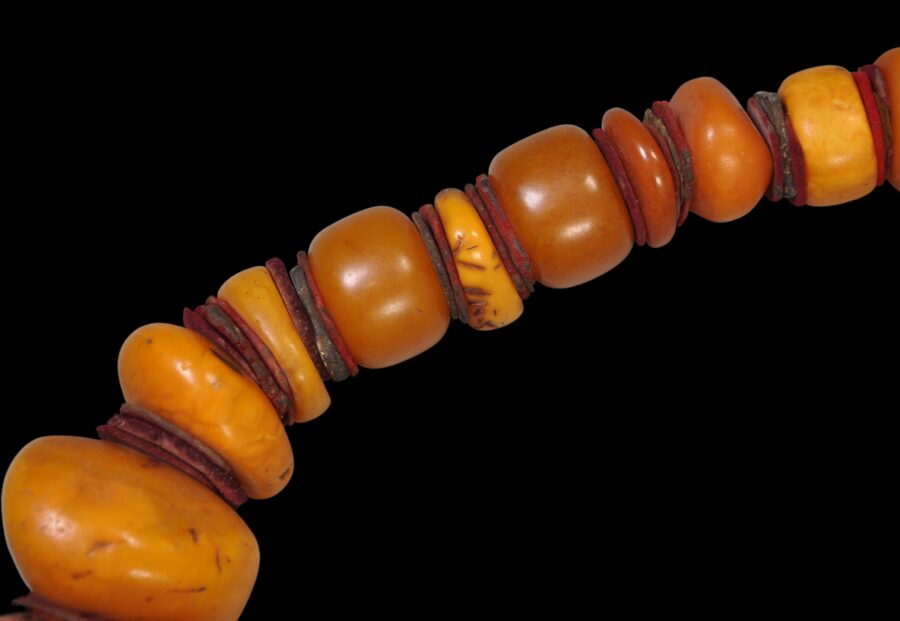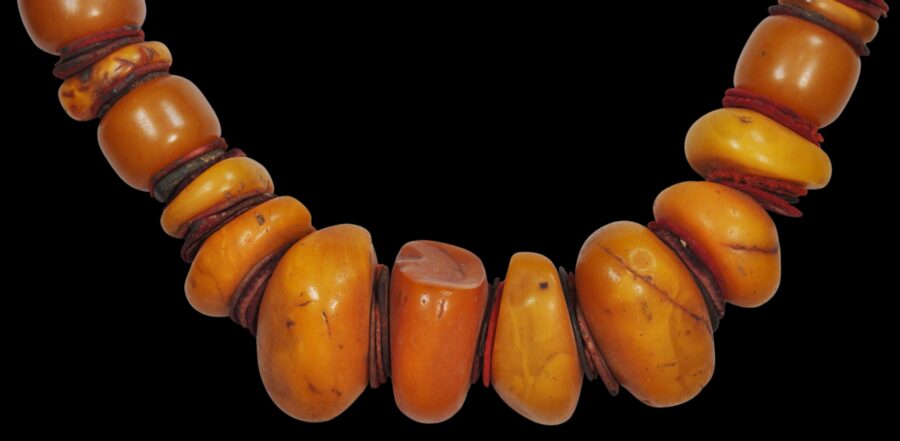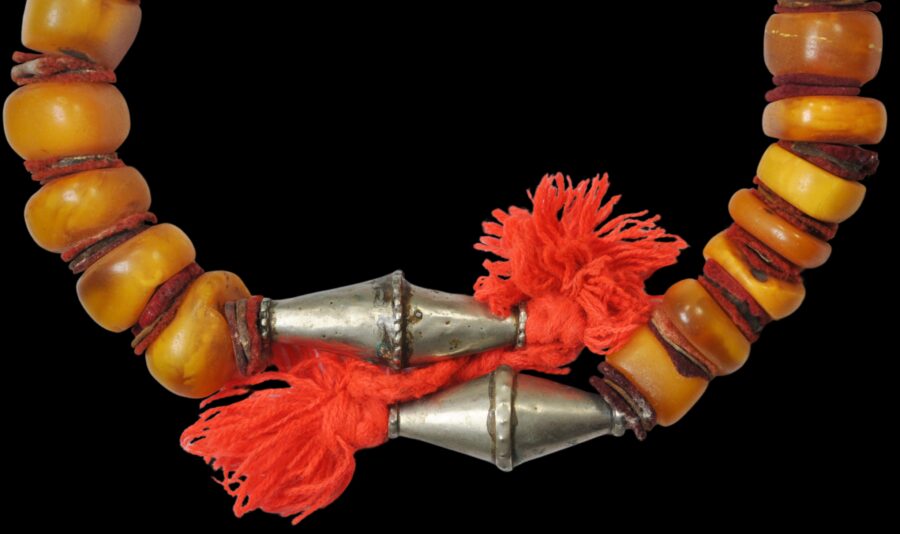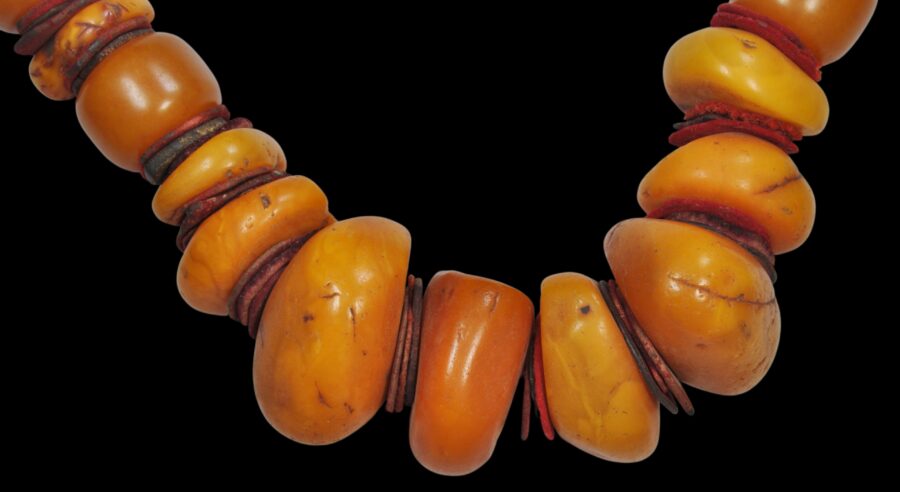Enquiry about object: 9663
Massive, Rare Berber ‘Front & Back’ Amber Necklace
Berber or Amazigh People, Ait Yazza Village and related groups, Draa Valley Region, South-eastern Morocco early 20th century
circumference: approximately 140cm, weight: 931g
Provenance
private collection, Germany; collected in the 1980s
This spectacular, large and extremely rare amber necklace is in its original state. It is unique in Morocco in that it is worn on the back as well as the front, and unique to the region from which it comes.
Relatively few such necklaces of this length would have existed in the first place, of of those, most have been dismantled and sold as shorter strings of amber beads or on a bead-by-bead basis as amber has become more commercially valuable. As a result, only a handful of these large necklaces have survived.
The necklace comprises 62 beads in total. Included are 58 amber lumps (lubana) that are old, authentic and unprocessed, and four barrel-shaped amber-coloured bakelite beads. The beads are separated by red woollen disks. These served to keep the amber beads apart and from damaging each other, suggesting the value that each bead had.
There are two conical silver terminal beads with some later red wool ties emerging from them. A string of plaited red wool runs across the necklace. This helped with the necklace being worn – it is original and usually these are missing.
The large quantity of amber used in this necklace and the massive size of the main beads served as an ostentatious display of wealth on the part of the wearer; indeed, relatively few Berber woman could have ever afforded such a necklace. Amber was valued for its symbolic and prophylactic properties.
Worn by wealthy Berber (Amazigh) women of the Draa Valley and the surrounding region, the larger part would be worn down the front, and the smaller section down the back as a counter-weight, with the red woollen band which divides the necklace into one third and two thirds proportions delineating the section for the front and that for the wearer’s back.
Few examples of this type of amber necklace have been published, no doubt on account of their rarity.
One smaller example of this type of necklace is illustrated in Draguet (2020, p. 376) but it is not in its original state and has been restrung with silver metal beads and dangles that original versions simply did not have.
One example was included in the ‘Spendours of Maroc’ exhibition at the Royal de l’Afrique Centrale in Belgium and illustrated in Grammet & de Meersman (199, p. 229) but as acknowledged, that piece was made entirely from synthetic amber.
The presence of four bakelite beads is not unusual and would have been added to enhance the necklace’s overall appearance. Bakelite was invented in 1907 by a Belgian-born American chemist and soon was used to make amber-style beads (among many other applications). These beads were incorporated into necklaces and other jewellery by Berber women. The bakelite beads were not intended to be passed off as amber – they are of a relatively standard barrel shape, whereas natural, unprocessed amber beads are always of an irregular shape.
The example here is in excellent condition. It is a rare, museum piece.
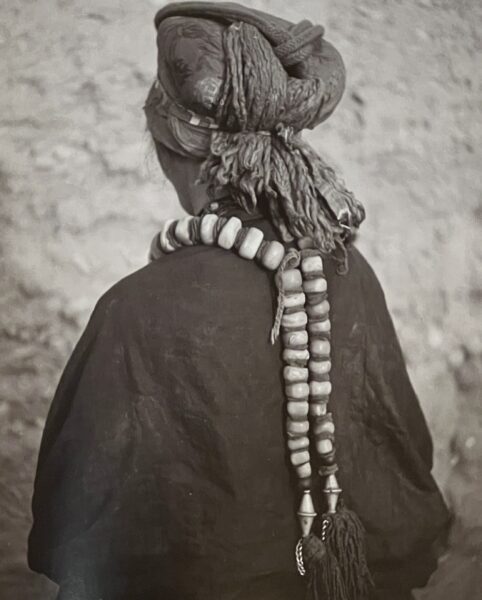
Above: a related amber necklace of a woman from the Ait Atta Berber grouping, adapted from a photograph taken by Jean Besancenot, 1930s.
References
Draguet, M., Berber Memories: Women and Jewellery in Morocco, Mercatorfonds, 2020.
Grammet, I., & M. de Meersman (eds.), Splendeurs du Maroc, Musee Royal de l’Afrique Centrale, 1998.
Hoek, C., et al, Ethnic Jewellery: From Africa, Asia and Pacific Islands, Pepin Press, 2004.


